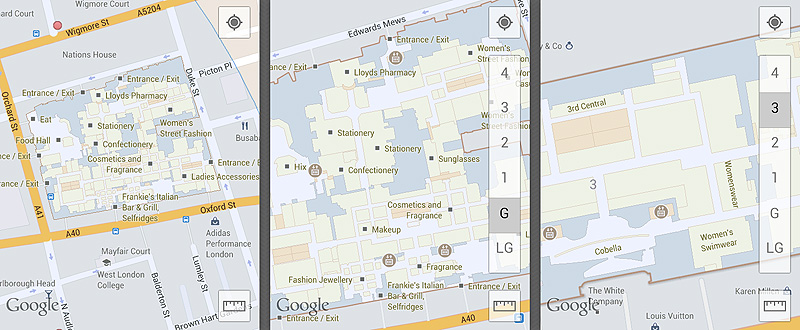If you have ever lost in a subway or a shopping mall, you know that indoor maps are indeed useful. I’m not the kind of person who wants to consult info points and -graphics every time looking for the right exit in the underground – but having a map in my phone that helps in these situations: that’s a real deal.
I have read sometime in July that the indoor function of Google Maps will be available in the UK, but I didn’t pay too much attention: with my age I already know how to get around in shops and how to look for those signs that give me directions. What’s really great though, is the ease of use. No matter which section, floor or department you are at, the phone is always in your pocket – and you always know which way to go next.
A faster, more effective, happier way of getting around indoors.
